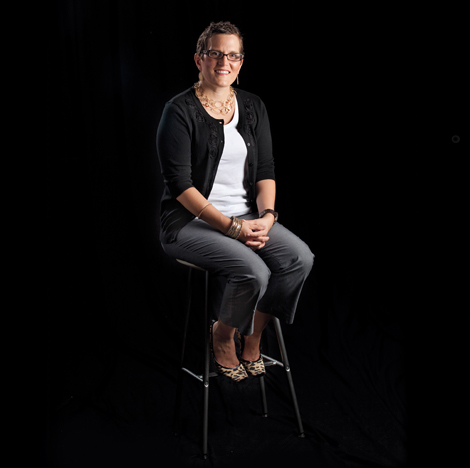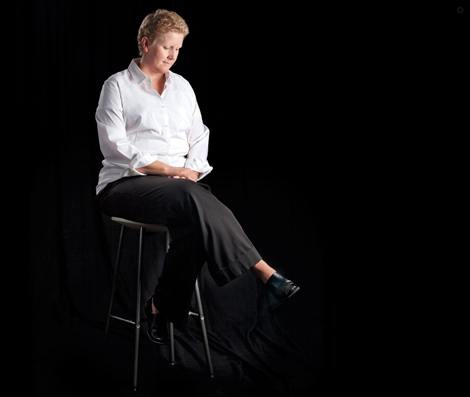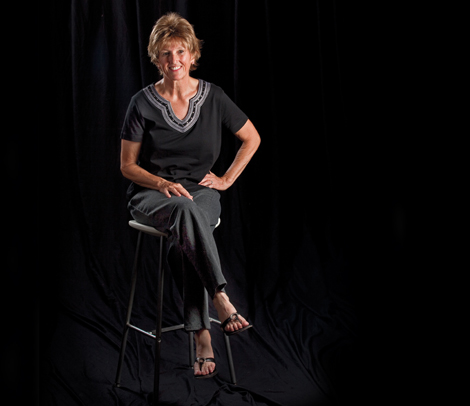At the forefront of the fight on breast cancer is Scottsdale Medical Imaging’s Breast Patient Navigator Team who provide education, guidance, care and support to the local women who are diagnosed with the disease every day. Here are the inspiring stories of three such patients.

Gina Paluch 36, Anthem
Gina Paluch described herself as a mother, a wife, a twin and an entrepreneur. She never expected to add fighter and breast cancer survivor to that list. But in August 2010, at the young age of 34, Paluch joined the fight against the disease.
Despite getting a clean bill of health during her annual well-woman exam eight months earlier, Paluch noticed a lump on her left breast in the shower one day. She made an urgent appointment with her gynecologist, who immediately scheduled a mammogram and, subsequently, a biopsy. The following day, Scottsdale Medical Imaging (SMIL) confirmed it: Paluch had breast cancer, a very aggressive case, in fact.
How did you make sense of all this?
GP: Thankfully, I had my [breast patient navigator nurse]. She held my hand, expedited all my tests, charted the course and gave me options. I didn’t have to do anything but process what I had just learned and gather my thoughts and emotions. She also showed me CaringBridge, an online journal that made it possible to share updates about my cancer with loved ones and friends. It kept everyone informed and was also therapeutic for me.
What advice would you give to women?
GP: Regular self breast exams. I’m the first to admit that I never did self breast exams. I thought it wouldn’t happen to me but, sure enough, I was diagnosed at age 34.
Also, if you are diagnosed with breast cancer, share your journey with those closest to you. You don’t have to go through it alone, and you’ll be blown away by the people who will come out of the woodwork to support you.
What are you most looking forward to?
GP: Vacationing with my entire family in March as a way to celebrate being cancer free.
? Did you know…
a clinical breast exam should be part of your periodic health exam, about every three years for women ages 20-30 and every year for women 40 and over?

Sandy Kilian 47, Phoenix
Have you ever had a feeling you just couldn’t shake? That’s how Sandy Kilian felt for four years; she knew something in her left breast just wasn’t right. Nonetheless, her annual mammogram always came back clear and her doctor sent her away with a clean bill of health.
In March, when she went in for her exam, the nurse felt something suspicious, despite Kilian’s clear mammogram. She sent Kilian for an ultrasound and, sure enough, a very concerning area showed up. Two days later, Kilian went for a biopsy, where it was confirmed to be cancer. Months later—post chemo, surgery and radiation— Kilian is now in remission and looking forward to living life, with her family and in the outdoors.
Who has helped you get through this process?
SK: My husband and family have always been a driving force for me, especially during this time. I also couldn’t have done it without the Breast Patient Navigator Team. [SMIL was] a light for me in what could have been my darkest days. The day I received the dreaded call, I hung up and dialed my nurse. By the time she called me back, she’d already scheduled appointments for me. In some ways, I think she was just as big a support for my husband as well. I remember hearing him on the phone with her while I was in bed after my first weeks of chemo. In fact, she was there during my first chemo appointment, holding my hand. I couldn’t have done it without her.
What advice would you give to women?
SK: No. 1: Know your options. Not all cancers show up in the same way. If you know in your gut that something is wrong, talk to your doctor about other options, like an ultrasound. No. 2: If you’re diagnosed with breast cancer, find a nurse navigator. They will help guide you and you can follow along, instead of going by yourself. No. 3: Know it’s not a death sentence. Many, many women have fought the battle and have come out on top.
? Did you know…
that if you have a greater than 20 percent lifetime risk, an MRI in conjunction with a screening mammogram is recommended every year?

Lucinda O’Connell 56, Scottsdale
A woman who has more than 150 sky dives under her belt in six years must be invincible, right? That’s what Lucinda O’Connell thought. Maybe not quite invincible, but she was cavalier about getting her mammograms—there was no family history of breast cancer, so why should she be concerned? In February 2011, that all changed.
O’Connell decided it was time for a check-up and scheduled a mammogram. Immediately following the routine screening, O’Connell was directed to get an ultrasound—the doctors had seen something they didn’t like. After the ultrasound, O’Connell was introduced to Dr. Lori Kunzelman, a breast imaging radiologist at SMIL and Liz Munger, RN, a certified breast patient navigator, who gently explained the likelihood that she had cancer. O’Connell calls it the beginning of her miracle. Leaving SMIL, cancer resource bag in-hand and follow-up appointments already scheduled, O’Connell was on her way to fight the disease and into remission.
How did you make sense of all this?
LO: The continual access to and advice from my breast patient navigator nurses at SMIL was truly a guide for me. The knowledge I received from them, namely LuAnn Robertson, RN, helped change my attitude and perspective. They gave me resource names, timelines, context and goals to work toward. They answered my questions before I even knew what to ask. They also provided a comfort few people could. [They were] literally at my side during some uncomfortable procedures, holding my hand. Without the nurse navigators, I would have had to start from zero, alone. I would have been much more afraid.
What advice would you give to women?
LO: Be on top of your health. No one else is going to do it for you. Take charge of your health, even if you’re afraid. Please educate yourself about breast cancer risk factors and get annual mammograms. And if you’re diagnosed with breast cancer, find a nurse navigator like SMIL’s—you’ll receive unprecedented care, direction, guidance and education. My navigators helped me through the process long after I left SMIL.
What are you most looking forward to?
LO: Feeling fabulous. And being an encourager to other women who have to go through this journey. I’m also looking forward to jumping [sky diving] again.
? Do you know…
about Tomosynthesis? It is a technology that utilizes high-powered computing to convert digital breast images into a stack of very thin image layers, building what is essentially a 3-D mammogram. Scottsdale Medical Imaging’s radiologists can now view breast tissue detail in a way never before possible.
Navigating Your Breast Health
Early detection is key in the battle against breast cancer, the most common form of cancer among women in the United States. If detected early, the five-year breast cancer survival rate is 98 percent. Likewise, the American Cancer Society and others recommend annual screening mammograms beginning at age 40, earlier depending on your own family medical history.
Scottsdale Medical Imaging (SMIL) recognizes that the breast screening process and possible subsequent screenings and medical appointments can create a sense of uncertainty, confusion and even fear for some women. By addressing both the art and science of breast health care, SMIL’s team of certified Breast Patient Navigators are redefining women’s breast imaging experiences by providing a personal connection offering caring and knowledgeable support, resources and guidance dedicated to helping women in their journey to breast health.
Available to women at all stages of breast care, SMIL’s Breast Patient Navigators are available if you have a concern about a routine screening, a diagnostic procedure or a cancer diagnosis. Working in partnership with your physician, they can facilitate scheduling appointments for imaging and follow-up, explain and clarify testing and results, and serve as a link to connect you with the
appropriate resources.
Once a woman is diagnosed with breast cancer, her world is often turned upside down and life becomes a scary, emotional and confusing time. SMIL’s Breast Patient Navigators are experienced registered nurses with an in-depth knowledge of and experience with the diagnosis and treatment of breast cancer. “Our breast navigator program exists to support, educate and empower women throughout their breast care journey,” says LuAnn Roberson, RN and SMIL certified Breast Patient Navigator. “SMIL is the only facility in the state that has nurse navigators at the imaging stage of care.”
To Learn More
Scottsdale Medical Imaging’s Certified Breast Patient Navigator Team includes registered nurses Pam Janosik, Liz Munger
and LuAnn Roberson. To schedule your mammogram screening, call 480.425.5000. www.getamammo.com.